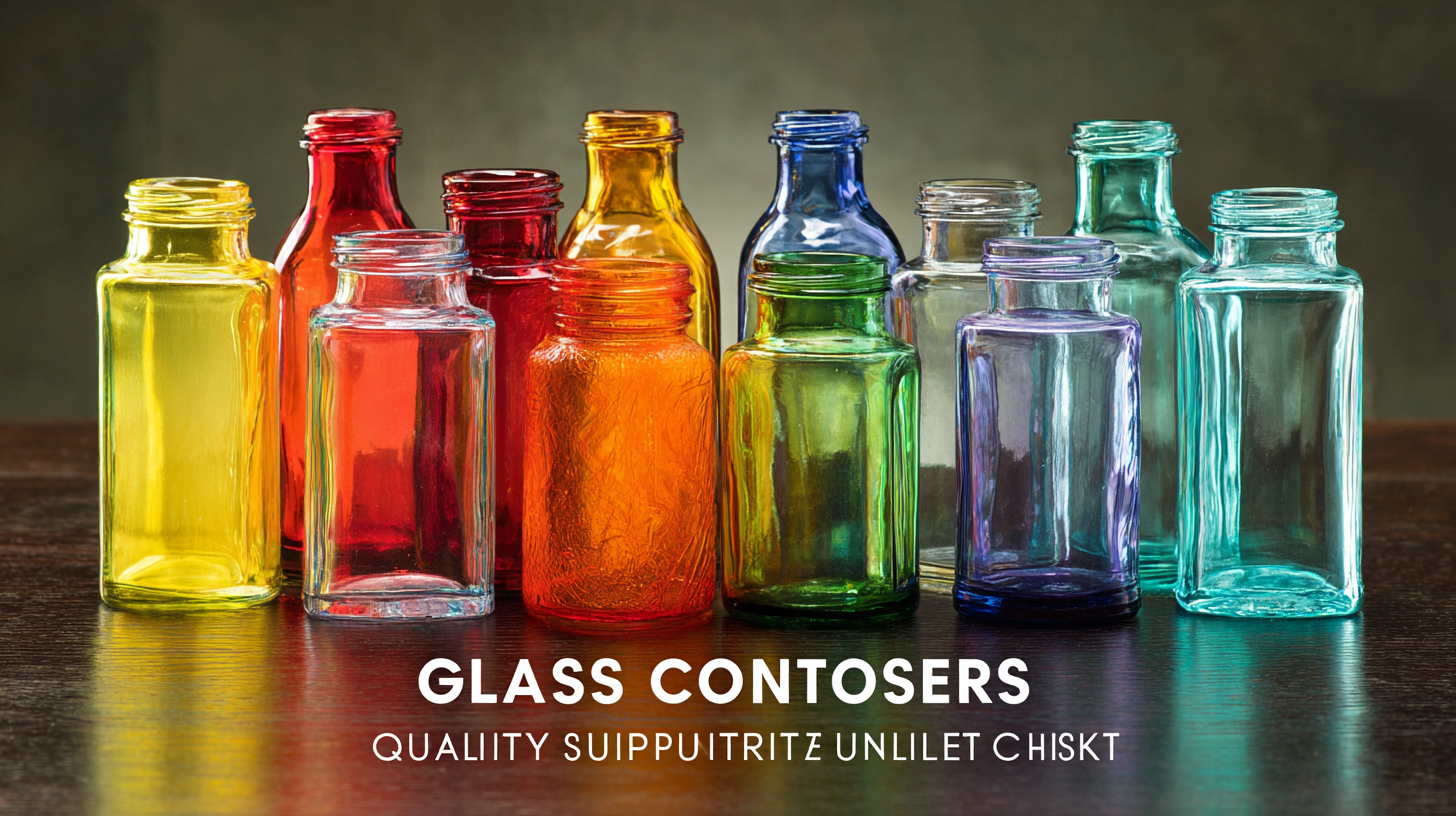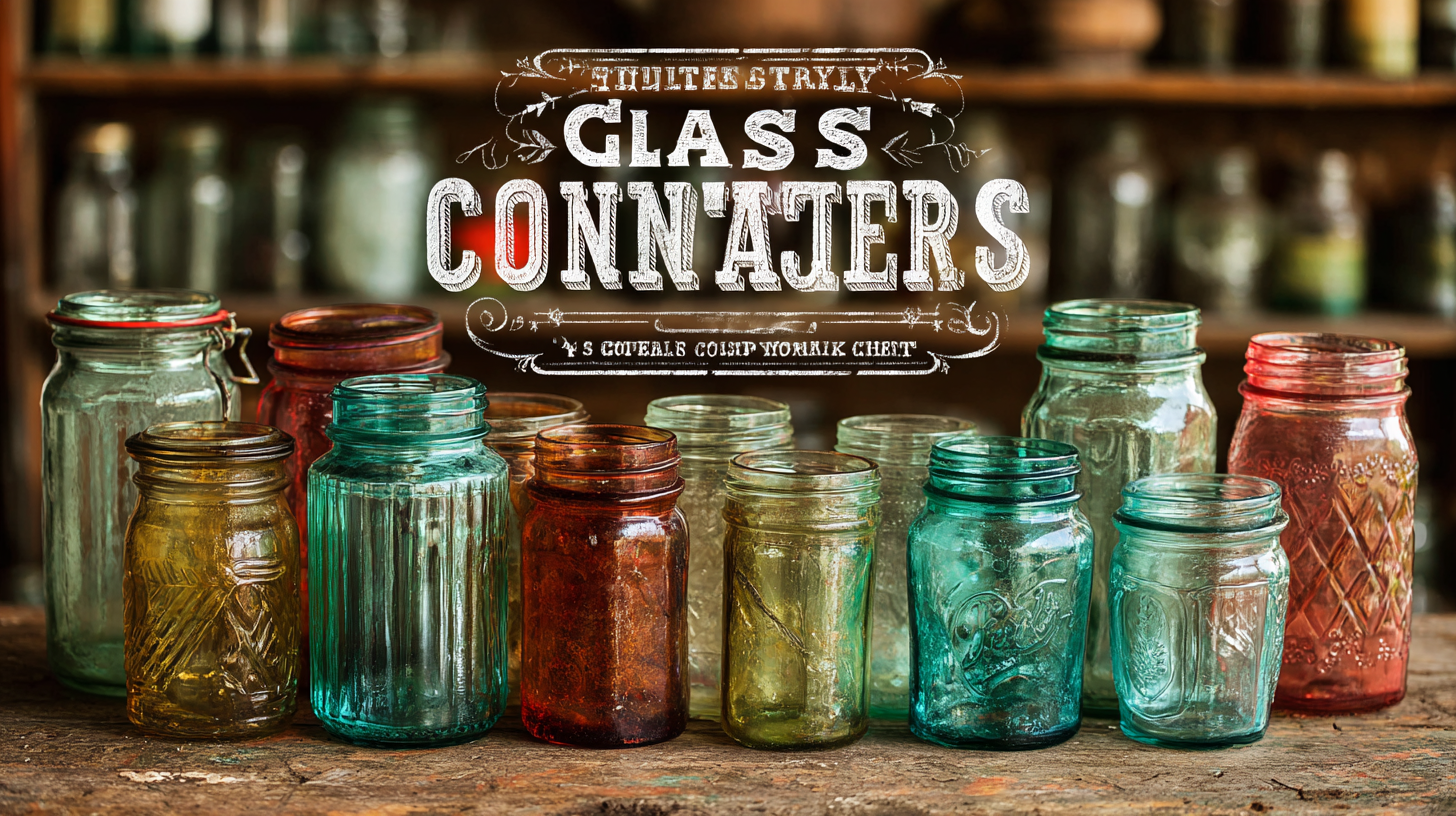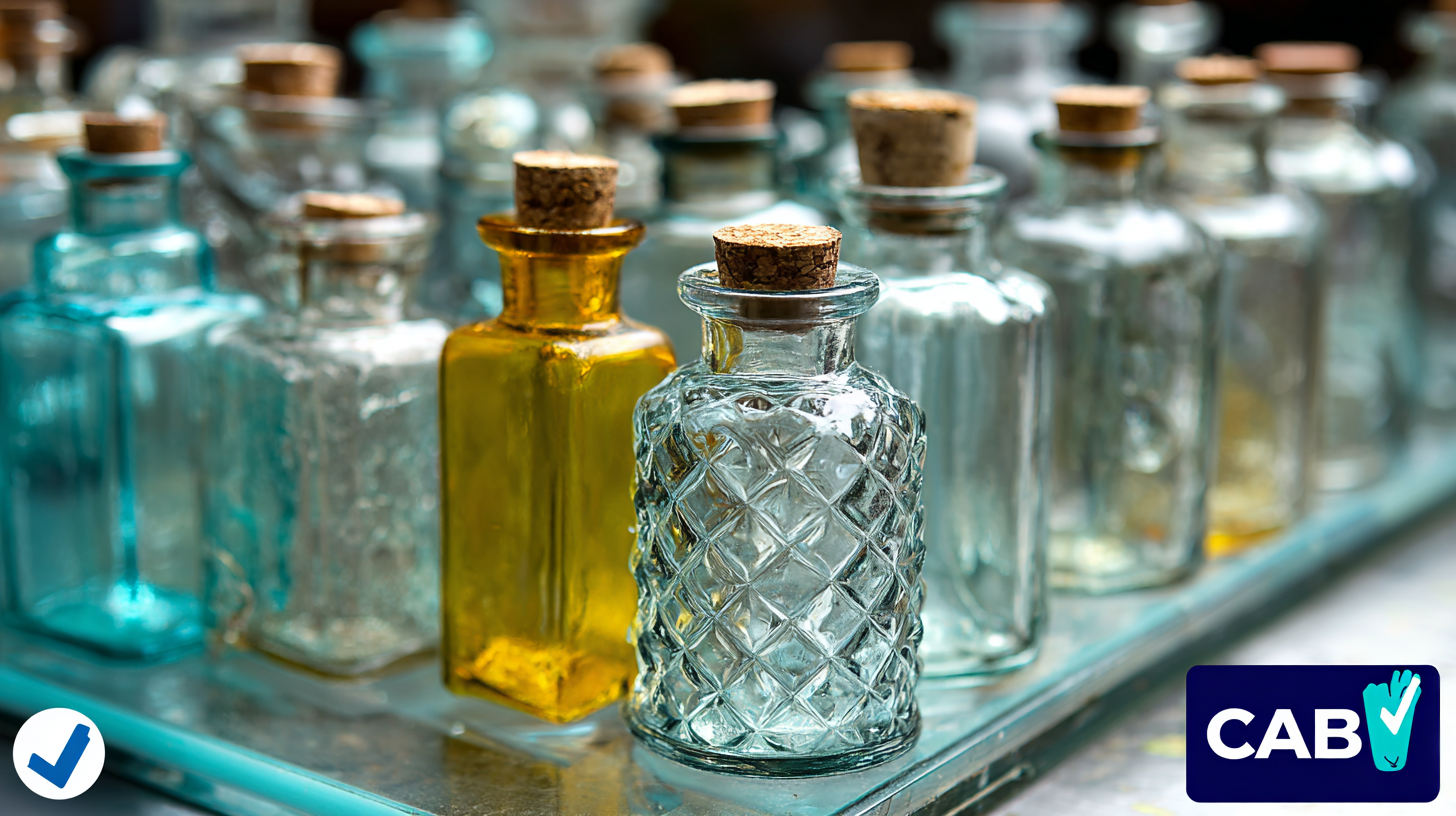Welcome to this website!

In the ever-evolving packaging industry, the demand for high-quality glass containers is on the rise, driven by growing consumer preferences for sustainable and safe options. According to a report by Market Research Future, the global glass packaging market is expected to reach USD 92.87 billion by 2027, with a compound annual growth rate (CAGR) of 4.9% during the forecast period. This surge underscores the critical importance of sourcing reliable suppliers who can deliver superior glass containers that meet both aesthetic and functional requirements. As more businesses shift towards eco-friendly practices, understanding the detailed technical specifications and conducting thorough supplier evaluations becomes imperative.

In this ultimate checklist guide, we will walk you through essential criteria and best practices for finding quality suppliers to ensure your glass container needs are met with optimal quality and performance.
The importance of glass container quality in your business cannot be overstated, especially in industries like pharmaceuticals and food packaging. Recent studies indicate that the global pharmaceutical glass packaging market is expected to reach USD 49.20 billion by 2034, growing at a compound annual growth rate (CAGR) of 7.87%. This robust growth underscores the increasing focus on the integrity and safety of glass containers, which play a pivotal role in maintaining product efficacy, particularly in sensitive applications like COVID-19 vaccine distribution.
In addition to the pharmaceutical sector, high-quality glass containers are essential for food products, as demonstrated in the life cycle assessment of canned seafood. The results reveal that glass jar packaging contributes positively to environmental assessments, indicating consumer preference for sustainable and safe packaging solutions. Despite the complexities and rising costs associated with glass packaging—recent figures show an 8% increase in the average cost of a glass bottle—businesses recognize that investing in quality materials not only enhances product perception but also aligns with growing consumer demand for sustainability. Engaging with reliable suppliers who prioritize quality can be a key differentiator in today’s competitive marketplace.
 When searching for quality glass containers, it's essential to focus on key features that ensure safety and efficacy. One of the foremost attributes is mechanical and chemical durability. Glass containers must withstand various stresses, particularly in pharmaceutical applications where they hold sensitive parenteral solutions. Rigorous testing of vials for resistance against physical shocks and chemical interactions can provide insight into their quality, ensuring that they maintain the integrity of the contents.
When searching for quality glass containers, it's essential to focus on key features that ensure safety and efficacy. One of the foremost attributes is mechanical and chemical durability. Glass containers must withstand various stresses, particularly in pharmaceutical applications where they hold sensitive parenteral solutions. Rigorous testing of vials for resistance against physical shocks and chemical interactions can provide insight into their quality, ensuring that they maintain the integrity of the contents.
Additionally, eco-friendliness is increasingly becoming a crucial consideration in choosing glass packaging. As the global push for sustainable practices gains momentum, manufacturers are prioritizing recyclable materials and designs that reduce environmental impact. Both single-use and reusable glass containers should be evaluated not only for their practicality but also for their contribution to a healthier planet. Understanding the balance between safety, durability, and sustainability is key in making informed choices in the glass container market, which continues to grow exponentially due to rising demands for safe and healthy packaging solutions.
When searching for quality suppliers for glass containers, evaluating supplier reputation is a crucial step. Researching and comparing supplier backgrounds can help you identify partners who are reliable and sustainable. One effective method is to utilize a systematic supplier management framework, which allows for the integration of selection and monitoring phases. This approach ensures that you not only select the right supplier but also maintain a productive partnership.
Tips: Start by collecting performance assessment data from potential suppliers. Understanding their past performance and reputation gives you insight into their reliability. Additionally, consider utilizing methods like the fuzzy best-worst technique to prioritize suppliers based on sustainability criteria. This can help ensure that your supplier selection aligns with your company’s values and long-term goals.
Another tip is to analyze the challenges and enablers indicated in recent studies. Research shows that understanding the social sustainability tensions within multi-tier supply chains can also inform your evaluation process. By being aware of these dynamics, you can make more informed decisions about which suppliers to engage with, enhancing the overall quality and sustainability of your supply chain.
When searching for quality glass containers, cost considerations are paramount. A recent industry report by Smithers Pira indicates that the global glass packaging market is projected to reach $80 billion by 2024, driven by increasing demand for sustainable packaging. However, achieving the right balance between quality and pricing often proves challenging for businesses. Choosing suppliers who offer transparent pricing structures without compromising on quality is essential for optimizing your budget.
Tip: Always request samples before making bulk purchases. This allows you to assess the quality of the glass containers and identify any potential issues early in the procurement process. According to a 2022 survey by Packaging Strategies, 65% of businesses reported that product samples significantly influenced their supplier selection.
Furthermore, consider the long-term cost implications of your choice. Investing in higher-quality containers may seem more expensive upfront, but it can lead to lower overall costs due to reduced breakage and returns. Research shows that businesses that prioritize quality over price save up to 20% on operational costs in the long run.
Tip: Evaluate the total cost of ownership (TCO) when comparing suppliers. This includes not just the purchase price, but also shipping, handling, and potential wastage costs, allowing you to make a more informed decision.
| Supplier Location | Container Type | Material Quality | Price Range ($) | Minimum Order Quantity | Lead Time (Days) |
|---|---|---|---|---|---|
| USA | Regular Glass Jars | High Quality | 1.50 - 3.00 | 100 | 15 |
| China | Mason Jars | Medium Quality | 0.80 - 2.50 | 200 | 20 |
| Italy | Decorative Glass Bottles | Premium Quality | 5.00 - 10.00 | 50 | 30 |
| India | Standard Glass Containers | High Quality | 1.00 - 2.00 | 150 | 18 |
Building long-term relationships with suppliers is crucial for businesses looking to thrive in competitive markets. Understanding the dynamics of supplier collaboration can mean the difference between success and stagnation. By pooling resources and sharing innovation strategies, companies can foster partnerships that not only enhance product quality but also drive sustainable practices.
 For instance, collaboration in supply chains, as seen in the technology and automotive sectors, highlights the importance of aligning goals with trusted suppliers to streamline operations and share risks.
For instance, collaboration in supply chains, as seen in the technology and automotive sectors, highlights the importance of aligning goals with trusted suppliers to streamline operations and share risks.
In the glass container industry, establishing strong connections with suppliers is key. Suppliers are not merely vendors; they are integral partners who can provide invaluable insights into sustainable materials and advanced production techniques.
Companies should prioritize clear communication and mutual understanding in these relationships. Investing in joint development projects and maintaining regular engagement can ensure that both parties are aligned in their objectives, leading to increased reliability and flexibility, which are essential for meeting changing market demands.
